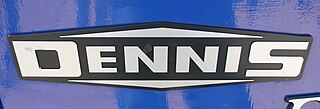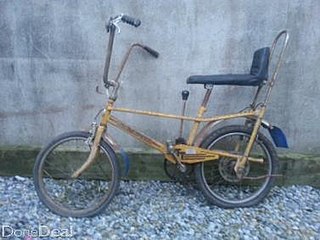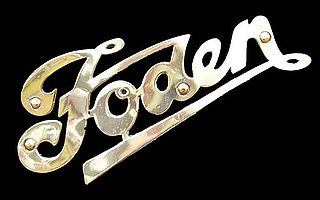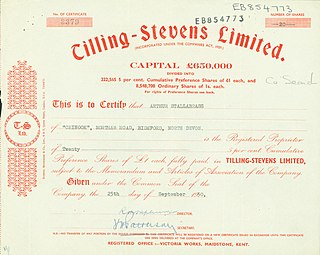
A truck or lorry is a motor vehicle designed to transport cargo, carry specialized payloads, or perform other utilitarian work. Trucks vary greatly in size, power, and configuration, but the vast majority feature body-on-frame construction, with a cabin that is independent of the payload portion of the vehicle. Smaller varieties may be mechanically similar to some automobiles. Commercial trucks can be very large and powerful and may be configured to be mounted with specialized equipment, such as in the case of refuse trucks, fire trucks, concrete mixers, and suction excavators. In American English, a commercial vehicle without a trailer or other articulation is formally a "straight truck" while one designed specifically to pull a trailer is not a truck but a "tractor".

Commer was a British manufacturer of commercial vehicles from 1905 until 1979. Commer vehicles included car-derived vans, light vans, medium to heavy commercial trucks, military vehicles and buses. The company also designed and built some of its own diesel engines for its heavy commercial vehicles.

A diesel–electric transmission, or diesel–electric powertrain is a transmission system for vehicles powered by diesel engines in road, rail, and marine transport. Diesel–electric transmission is based on petrol–electric transmission, a very similar transmission system used for petrol engines.

Dennis Specialist Vehicles was an English manufacturer of commercial vehicles based in Guildford, building buses, fire engines, lorries (trucks) and municipal vehicles such as dustcarts. All vehicles were made to order to the customer's requirements and more strongly built than mass production equivalents. For most of the 20th century the Dennis company was Guildford's main employer.

Associated Equipment Company (AEC) was a British vehicle manufacturer that built buses, motorcoaches and trucks from 1912 until 1979. The name Associated Equipment Company was hardly ever used; instead it traded under the AEC and ACLO brands.

Seddon Atkinson Vehicles Limited, a manufacturer of large goods vehicles based in Oldham, Greater Manchester, England, was formed after the acquisition in 1970 of Atkinson Vehicles Limited of Preston by Seddon Diesel Vehicles Limited of Oldham. In 1974, the firm was acquired by International Harvester, which sold it in March 1984 to the Spanish group Enasa which made it a subsidiary of Pegaso. In 1990, it became part of Iveco which used the brand for various types of specialised vehicles in the United Kingdom. The range of models produced included EuroMover, Pacer and Strato, which are aimed at refuse collection, recycling and construction operators.

Sentinel Waggon Works Ltd was a British company based in Shrewsbury, Shropshire that made steam-powered lorries, railway locomotives, and later, diesel engined lorries, buses and locomotives.
Henry Meadows, usually known simply as Meadows, of Wolverhampton, England were major suppliers of engines and transmissions to the smaller companies in the British motor industry. Founded in 1920 in Park Lane, Wolverhampton, as a car gearbox maker, they expanded into petrol engines in 1922 and in the 1930s built a large factory in Fallings Park, Wolverhampton.

Lines Bros Ltd was a British toy manufacturer of the 20th century, operating under the Tri-ang Toys brand name.

Foden Trucks was a British truck and bus manufacturing company, which had its origins in Elworth near Sandbach in 1856. Paccar acquired the company in 1980, and ceased to use the marque name in 2006.
Bedford Vehicles, usually shortened to just Bedford, was a brand of vehicle manufactured by Vauxhall Motors, then a subsidiary of multinational corporation General Motors. Established in April 1931, Bedford Vehicles was set up to build commercial vehicles. The company was a leading international lorry brand, with substantial export sales of light, medium, and heavy lorries throughout the world.

ERF was a British truck manufacturer established in 1933 by Edwin Richard Foden, from whose initials the company was named. Its factory in Middlewich closed in March 2002, and it was discontinued as a marque by owner MAN in July 2007.

Guy Motors was a Wolverhampton-based vehicle manufacturer that produced cars, lorries, buses and trolleybuses. The company was founded by Sydney S. Guy (1885–1971) who was born in Kings Heath, Birmingham. Guy Motors operated out of its Fallings Park factory from 1914 to 1982, playing an important role in the development of the British motor industry.

Tilling-Stevens was a British manufacturer of buses and other commercial vehicles, based in Maidstone, Kent. Originally established in 1897, it became a specialist in petrol-electric vehicles. It continued as an independent manufacturer until 1950, when it was acquired by the Rootes Group.

The Bedford RL was the British military's main medium lorry, built by Bedford from the mid-1950s until the late 1960s. The lorry was based on the civilian Bedford S type, first introduced in 1950. They superseded the Bedford QL, and were in turn superseded by the Bedford MK/MJ.
The Leyland Lion, coded as PSR1, was a bus chassis manufactured by Leyland as its first production rear engined single decker. It was announced in 1960, although the first two were built in 1959. 56 LPSR1 and 28 PSR1 were sold to 1967 which was low for Leyland at the time. It was the third of five Leyland bus models to carry the Lion brand.

Vanajan Autotehdas Oy (VAT) was a producer of heavy vehicles based in Hämeenlinna, Finland. The company was founded as Yhteissisu Oy in 1943 by the Finnish government and a number of major Finnish companies with the aim of producing lorries and buses for the Finnish Defence Forces. World War II was over before the company could start series production; it was renamed Vanajan Autotehdas and the marque became Vanaja. Subsequently, the production consisted of outdated lorry models, partly built from military surplus materials. After overcoming initial difficulties, the company modernised its products, became profitable and grew until the mid-1950s. Many major components, including engines, were imported. Diesel engines became widely available in 1955, and in 1959 VAT introduced its most significant innovation, the full load lifting tandem axle mechanism, which improved off-road capability significantly; the system is now used in Sisu vehicles.

In automotive engineering, the drivetrain is the group of components of a motor vehicle that deliver power to the drive wheels. This excludes the engine or motor that generates the power.

The Jeffery Quad, also known as the Nash Quad or Quad is a four-wheel drive, 11⁄2-ton rated truck that was developed and built by the Thomas B. Jeffery Company from 1913 in Kenosha, Wisconsin, and after 1916 by Nash Motors, which acquired the Jeffery Company. Production of the Quad continued unchanged through 1928.
Walker Brothers Limited was a manufacturer based in Pagefield Ironworks, Wigan, England. It produced ventilation equipment for mining, truck and bus chassis, mobile cranes, and railway locomotives and railcars.
















